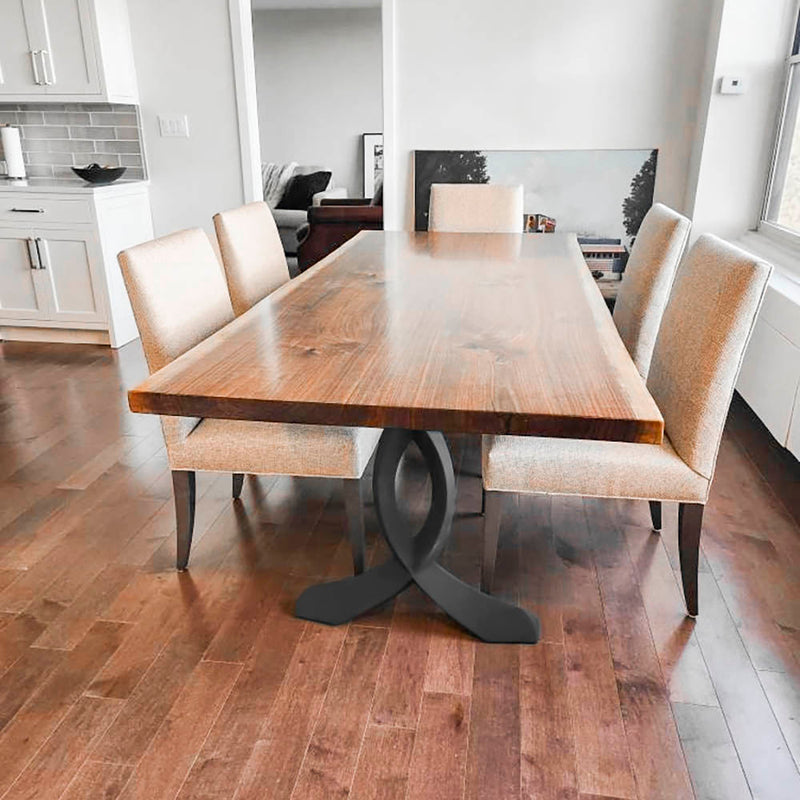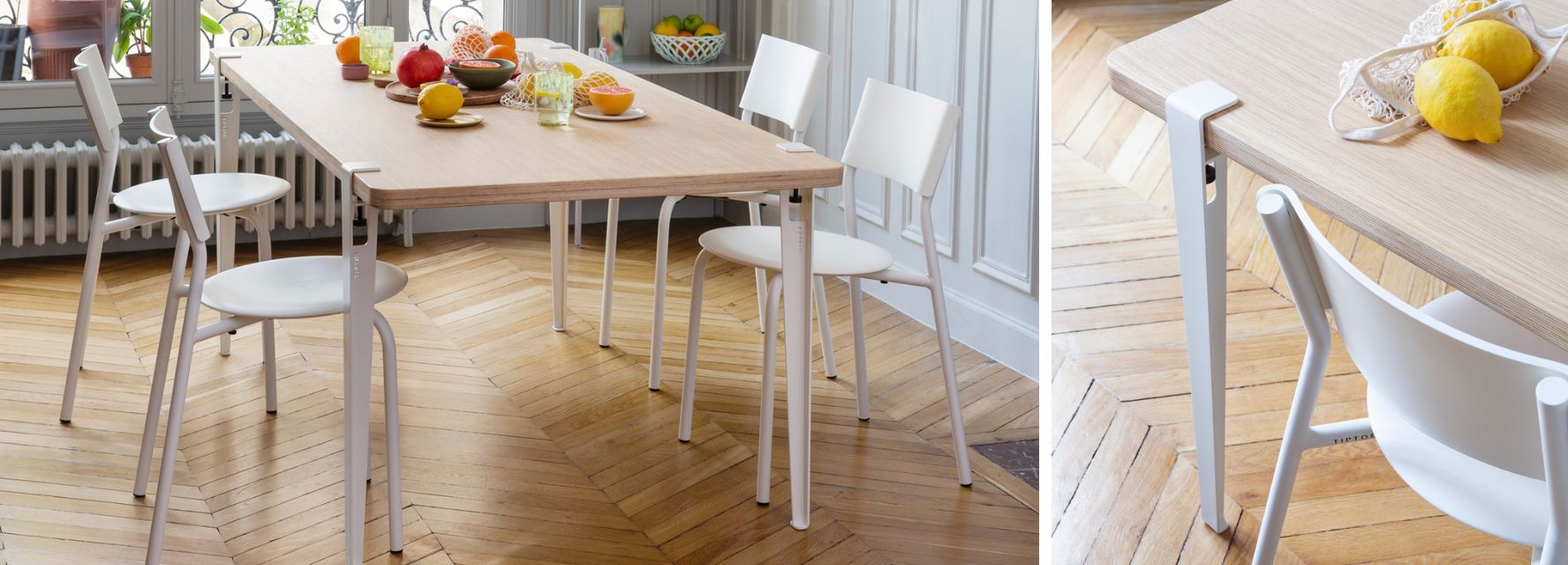Upgrade Your Furniture with Custom Dining Room Table Legs
Wiki Article
Exactly How to Choose the Perfect Dining-room Table Legs for Your Home Decoration
Choosing the optimal dining-room table legs is a nuanced process that requires careful factor to consider of different aspects, including your room restraints, aesthetic choices, and functional demands. The interplay in between materials, styles, and measurements can substantially affect the setting of your dining location, making it necessary to approach this decision carefully. As you ponder the myriad options offered, it comes to be clear that the best option expands past simple appearance; it can improve your general eating experience. What variables should you prioritize to guarantee your selection enhances your home's special character?Assess Your Eating Space
Assessing your eating area is essential for picking the right table legs that match both looks and performance. Begin by measuring the measurements of your dining location, including ceiling elevation, floor area, and proximity to various other furniture. This details will aid figure out the appropriate dimension and height of your eating table, which directly affects the choice of table legs.Following, consider the style and format of your eating space. For example, an open-concept design may take advantage of table legs that supply visual lightness, such as slim steel or acrylic options. On the other hand, a much more typical setting may require tough wooden legs that offer a sense of durability.
Review the existing color palette and products in your dining location. Harmonizing the table legs with these elements creates a natural look that boosts the overall decor.
Ultimately, an extensive evaluation of your dining space will lead you in making an educated choice, making sure that your table legs not only enhance the aesthetic allure however likewise serve sensible objectives.
Consider Your Style Preferences
When choosing dining area table legs, it is important to assess your personal style choices, as they substantially influence the overall visual of your dining room. Your selection of table legs can either complement or comparison with existing decor, making it vital to align them with your preferred indoor design theme.If your home leans in the direction of a contemporary aesthetic, take into consideration smooth steel or minimalist wooden legs that offer a tidy, uncluttered appearance. For a much more conventional strategy, elaborate wooden legs with detailed carvings can include a touch of beauty and sophistication. Industrial designs gain from robust, basic materials such as recovered timber and metal mixes, reflecting a sturdy charm.
In addition, farmhouse and rustic styles commonly favor strong, chunky legs that evoke a feeling of warmth and convenience. Conversely, if your design is diverse, you may pick non-traditional forms or a mix of materials to create aesthetic passion.

Evaluate Product Options
The choice of material for dining space table legs plays an essential duty in both sturdiness and visual allure. Usual materials include wood, metal, and composite options, each offering unique attributes that can affect the total appearance and long life of your table.Timber is a classic choice, known for its warmth and versatility. Hardwoods like oak and walnut offer extraordinary stamina and can be completed in different spots to match any type of decoration. Softwoods like pine are more vulnerable to scratches and dents, making them less ideal for high-traffic locations.
Steel legs, usually crafted from steel or light weight aluminum, emanate modernity and commercial appeal. They are highly durable and resistant to wear, making them suitable for family members with kids or regular gatherings (dining room table legs). In addition, metal can be finished in numerous shades, enhancing the customization opportunities
Composite materials, such as MDF or laminate, deal cost and diverse layouts. While normally less durable than strong wood or steel, they can still supply an elegant look and are frequently very easy to preserve.
Ultimately, the product you choose need to line up with your lifestyle, visual preferences, and the level of use your table will experience.
Determine Height and Size
Choosing the proper elevation and size for your dining space table is vital for both functionality and convenience. The standard elevation for eating look at here tables usually ranges from 28 to 30 inches, enabling enough legroom for a lot of people when seated. Nevertheless, it is essential to consider the measurements of your eating area and the kinds of chairs you plan to utilize.
In addition, take into consideration the percentages of your dining room. A larger table in a spacious area can create a grand ambiance, while a smaller table works well in more intimate settings. Ultimately, the right height and size will certainly integrate with your general decor and improve the dining experience for you and your guests.
Explore Personalization Possibilities
look at this web-site
Additionally, the layout of the legs can be tailored to fit numerous styles, such as rustic, modern, or commercial. For instance, tapered legs can stimulate a mid-century contemporary feel, while chunky, block-style legs might resonate with conventional or farmhouse design.
House owners can likewise check out shade surfaces, from all-natural wood discolorations to paint, allowing them to match or contrast with the table top and surrounding style.
Additionally, leg elevation can be gotten used to suit certain seating arrangements or personal choices, enhancing both convenience and functionality.
Finally, unique embellishments, such as makings or decorative braces, can better personalize the table legs, making the eating experience not simply a statement however a dish piece in the home. By thinking about these modification options, house owners can develop a dining space table that absolutely reflects their uniqueness.
Final Thought
Picking the perfect dining-room table legs requires careful consideration of different variables, including the dimensions of the dining area, design choices, product resilience, and preferred height. Personalization alternatives further enhance the ability to accomplish a cohesive aesthetic that matches the total style. By methodically evaluating these elements, property owners can guarantee that the selected table legs not only meet practical demands however likewise contribute positively to the dining experience and ambiance of the home.Selecting the perfect dining room table legs is a nuanced process that requires cautious consideration of different elements, including your space constraints, aesthetic choices, and sensible demands.Examining your eating area is important for choosing the right table legs that complement both looks and performance.When identifying size, gauge the location where the table will be placed to guarantee it fits pleasantly, enabling for at the very least 36 inches of clearance around the table for easy movement. A bigger table in a large area can create a grand setting, while a smaller sized table works well in even more intimate settings.Selecting the ideal eating space table legs requires mindful consideration of various aspects, including the dimensions of the eating room, design preferences, material durability, and preferred elevation.
Report this wiki page